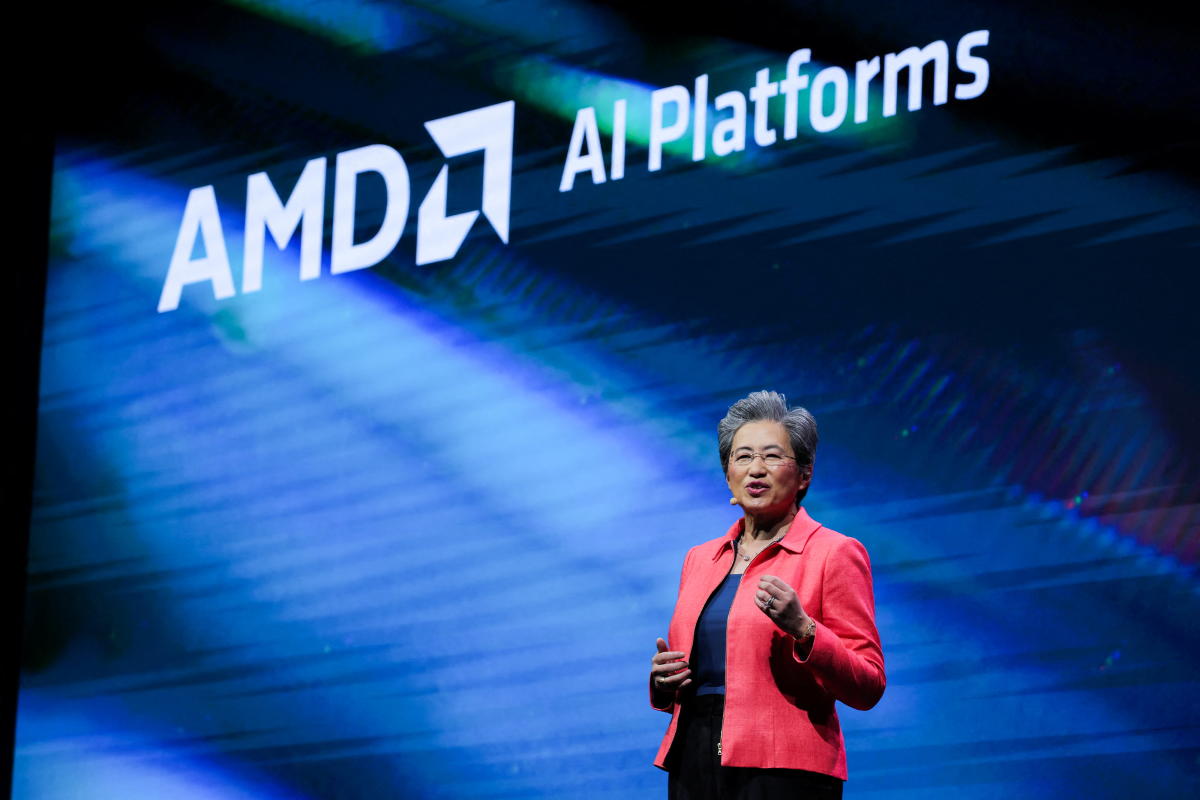Physical Address
304 North Cardinal St.
Dorchester Center, MA 02124
Physical Address
304 North Cardinal St.
Dorchester Center, MA 02124

Amd (AMD) mentioned Fourth quarter profits After the bell on Tuesday, overlooking the expectations in the upper and lower lines and providing Q1 expectations better than expected.
The declaration of the chips maker on the same day that President Donald Trump entered a 10 % tariff for goods in China, and after a little more than a week after China -based Dibsic shook the technology world with low -cost Amnesty International models.
Despite the victory of the strongest profits and directions, AMD shares decreased by more than 3.5 % in trading after working hours.
AMD is fighting to take its market share in the artificial intelligence space from NVIDIA (NVDA) competition, which dominates the sales of high -energy artificial intelligence. At the same time, the company competes with a constant slowdown in computers sales, even when the industry pushes consumers and institutions towards computers that feature computers that feature specialized processors designed to operate artificial intelligence tasks.
For a quarter, AMD reported $ 1.09 arrow (EPS) on revenues of $ 7.56 billion. Wall Street had expected the share of $ 1.09 and revenues of $ 7.5 billion, according to Bloomberg’s unanimous estimates. The company’s data center, its largest sector, according to revenues, brought 3.9 billion dollars, only a shy of expectations of $ 4.09 billion per quarter.
The AMD client slice, which includes foil for computers, has generated $ 2.3 billion for this quarter. Analysts expected $ 1.98 billion in revenues. The company also witnessed games revenue of $ 563 million. Wall Street was looking for $ 487 million.
For the current quarter, AMD expects revenue between $ 6.8 billion and $ 7.4 billion. Wall Street expects $ 7.0 billion.
AMD shares have struggled for the past 12 months, as they decreased by 33 % compared to NVIDIA competition, which jumped 80 %. However, this is better than Archnemesis Intel (INTC), which witnessed the 54 % decrease in the same time period.
While Trump’s tariff on Chinese Chinese goods will not affect the majority of the high chips market, many of which are manufactured in areas such as Taiwan, the broader market for electronics, including servers and personal computers, which were built in China are affected.
Read more: What are the definitions, and how do you affect you?
If companies and consumers are stopped at higher prices on those systems and devices, chips manufacturers such as AMD may slow sales.
In addition to the customs tariff for Chinese goods, Trump also raised the specter of definitions that specifically target semiconductors and associated products in an attempt to provide manufacturing to the United States. But these types of definitions increase consumer prices for a long period of time, as building chip facilities is a complex task that takes years to complete.